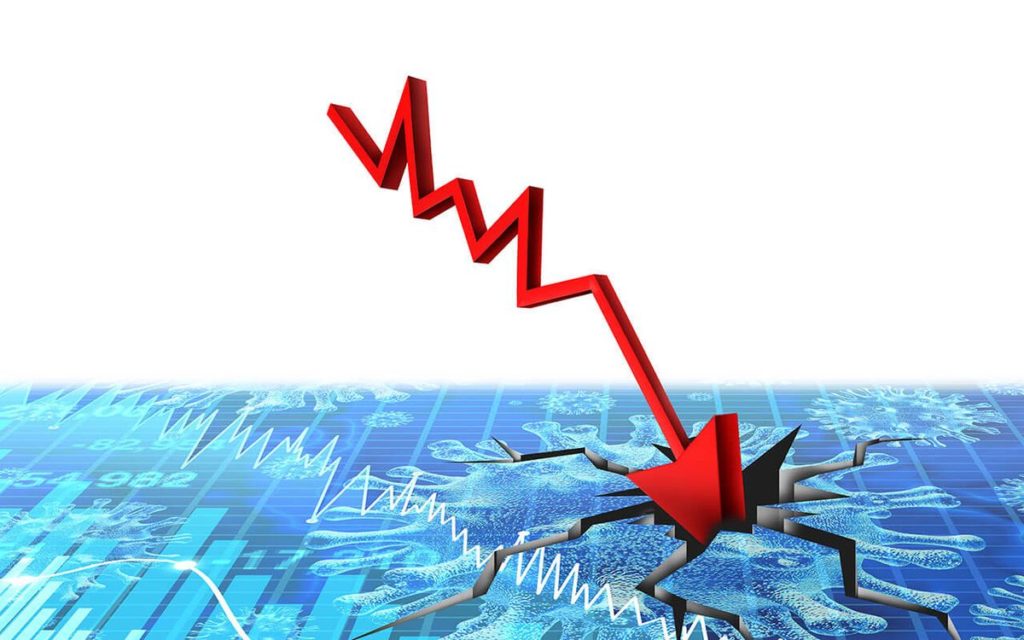Digital Zeitgeist – Inflation In The United States Falls To 6% Rate Despite The Approaching Threat Of A Banking Crisis
In the turbulent aftermath of the collapse of Silicon Valley Bank, there is a possibility that the Federal Reserve’s aim of bringing inflation to 2% may undergo dramatic change.
Price increases slowed down again in February as the annual rate of inflation decreased, but the news has been overshadowed by a banking crisis in advance of the meeting of the Federal Reserve that will take place the following week.
Prices increased by 6% compared to the same month a year earlier, which is a decrease from the annual rate of 6.4% observed in January and a considerable decrease from the 9.1% recorded in June when inflation reached its peak. The cost of living went up by 0.4% between January and February as a result of price increases in sectors such as housing and food.
The monthly consumer price index (CPI), which is a measurement of the price of a basket of goods and services, has been the primary data point that the Federal Reserve has relied on in determining whether or not to increase interest rates during the last year. Since March of the previous year, interest rates have increased from 0% all the way up to 4.5%, which is now at its highest level since 2007.
The estimates used by the Fed have undergone significant changes over the course of the last week. The failure of the $200 billion Silicon Valley Bank, as well as the continued turbulence that has followed it, has presented a tremendous challenge for the tenacious struggle that Jerome Powell, the head of the Fed, is doing to bring down inflation by increasing interest rates.
Powell testified before Congress the previous week that the United States still had a “long way to go” in decreasing inflation, which gave the impression that the Federal Reserve would not only continue to raise interest rates in the coming months, but that it would do so forcefully. Powell expressed his dissatisfaction with January’s modest decline in inflation, which was accompanied with statistics showing a stable job market and healthy consumer spending. He said this made him “uncomfortable.”
The next day, SVB made the announcement that it needed to raise cash because it had sold assets at a loss. This announcement set off a textbook-case bank run, in which the bank’s clients, many of whom are venture capitalists, began swiftly withdrawing accounts. Friday was the day when financial authorities put an end to the bank’s operations and seized control of its deposits.
Throughout the course of the weekend, consumers rapidly began to experience repercussions as they were concerned about the condition of other banks. On Sunday, governing bodies ordered the closure of the New York-based cryptocurrency-focused bank known as Signature Bank. A backstop measure was announced on Sunday by government officials, including Powell, the secretary of the Treasury, Janet Yellen, and the chair of the Federal Deposit Insurance Corporation (FDIC), Martin Gruenberg. This measure will ensure that depositors at SVB and Signature Bank will still be able to access their money.
Still, contagion effects were seen on Monday when shares of US and European banks started to sell off sharply. Joe Biden in a statement encouraged calm over the situation saying, “Americans can have confidence that the banking system is safe.”
The rate of inflation has been the primary factor in the Federal Reserve’s decision to raise interest rates; nonetheless, the failure of SVB raises a significant dilemma for the Fed: how far is it prepared to go in order to bring inflation under control?
Even while the rate of year-over-year inflation is continuing to show a lower trend, the rate is still quite a ways off from the goal rate of 2% that the Fed has set. This is something that Powell has underlined the need of being concerned about.
“We’re strongly committed to returning inflation to our 2% goal,” Powell said last Tuesday. “We will stay the course until the job is done.”
Yet, despite the fact that SVB executives and venture capitalists, who have supported looser banking rules but were the ones who led the run on SVB, have been the target of blame, the bank’s problems were ultimately brought on by an increase in interest rates.
As a result of the bank’s investments in bonds, which have a value that is inversely proportional to interest rates, the value of the bank’s bond holdings decreased as interest rates began to rise. When you combine this with the fact that the surge in the technology industry that occurred during the pandemic has now subsided, resulting in enormous layoffs at big technology companies, it was clear that things were not going to turn out well for SVB for some time.
Analysts are forecasting that as a result of the scandal surrounding SVB, the Federal Reserve will not change interest rates. Such a decision is anticipated to shake the financial markets. But, Powell and the board will ultimately be responsible for making the choice. The next board meeting of the Federal Reserve, which will take place on March 21 and 22, will be where decisions on interest rates are made.
online sources: theguardian.com, federalreserve.gov

